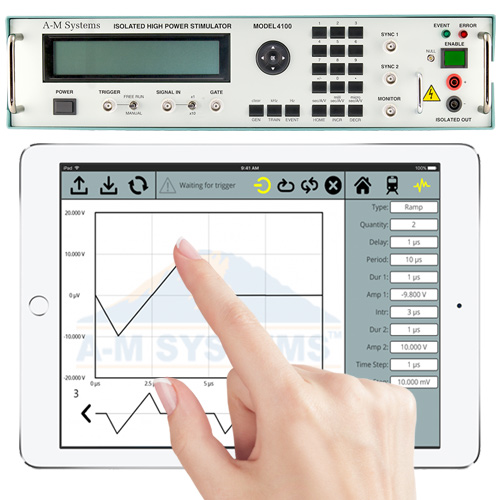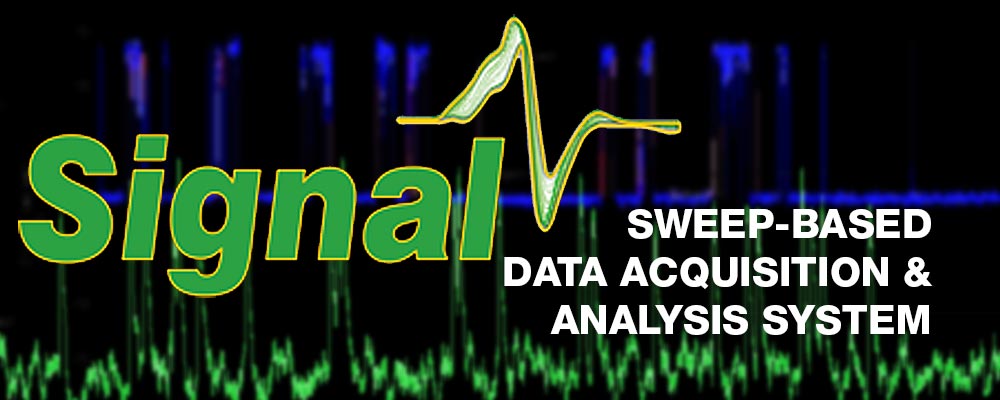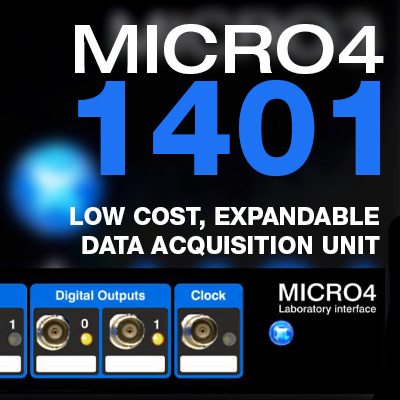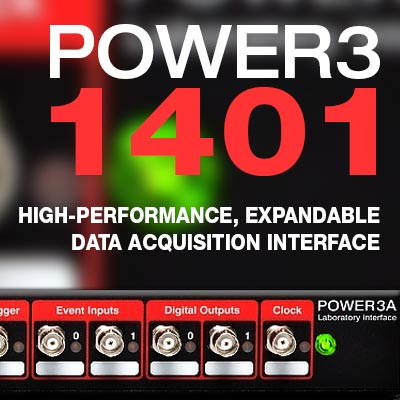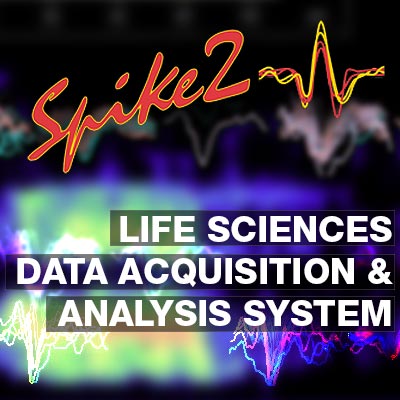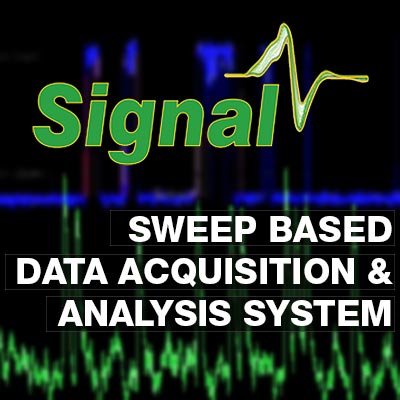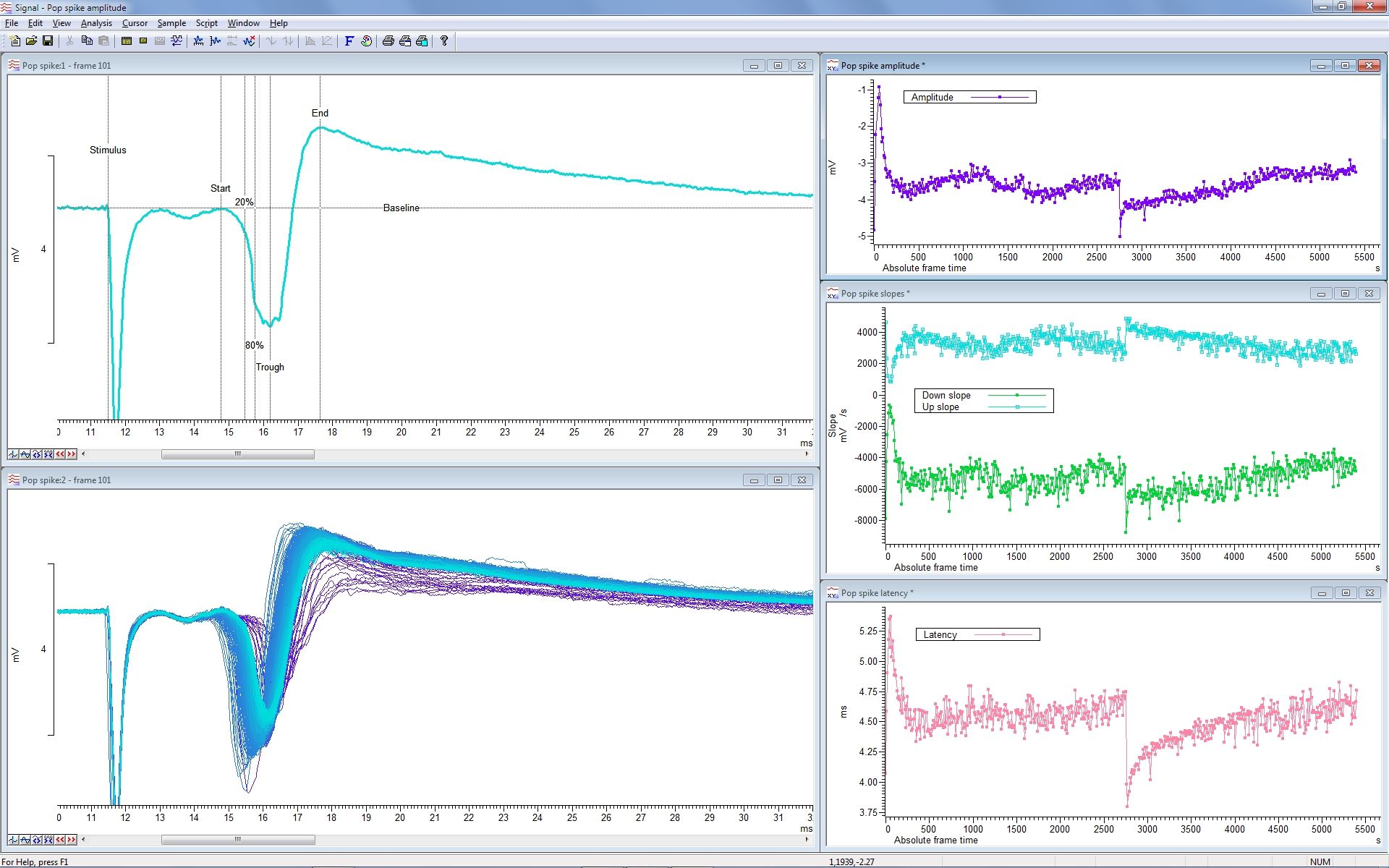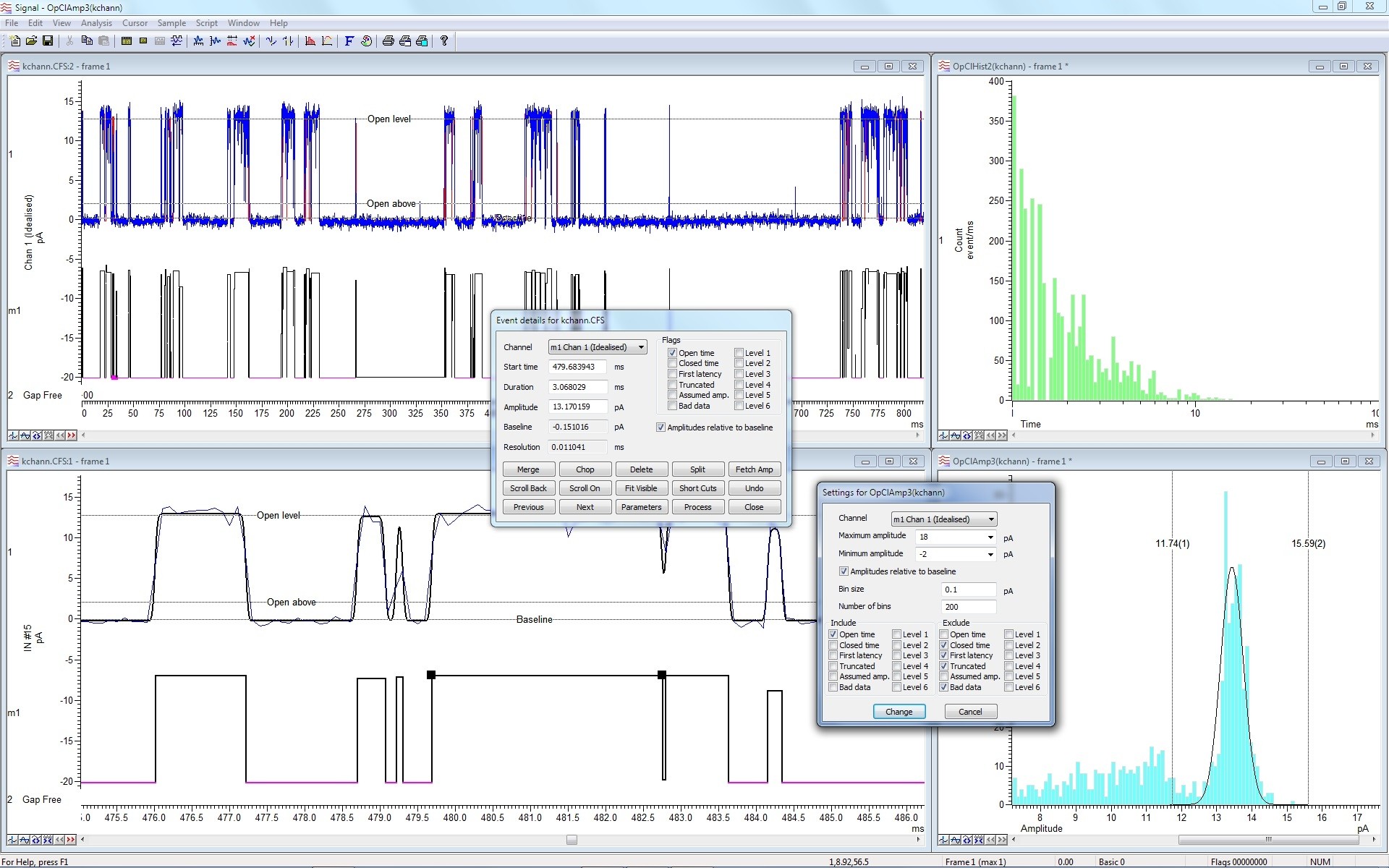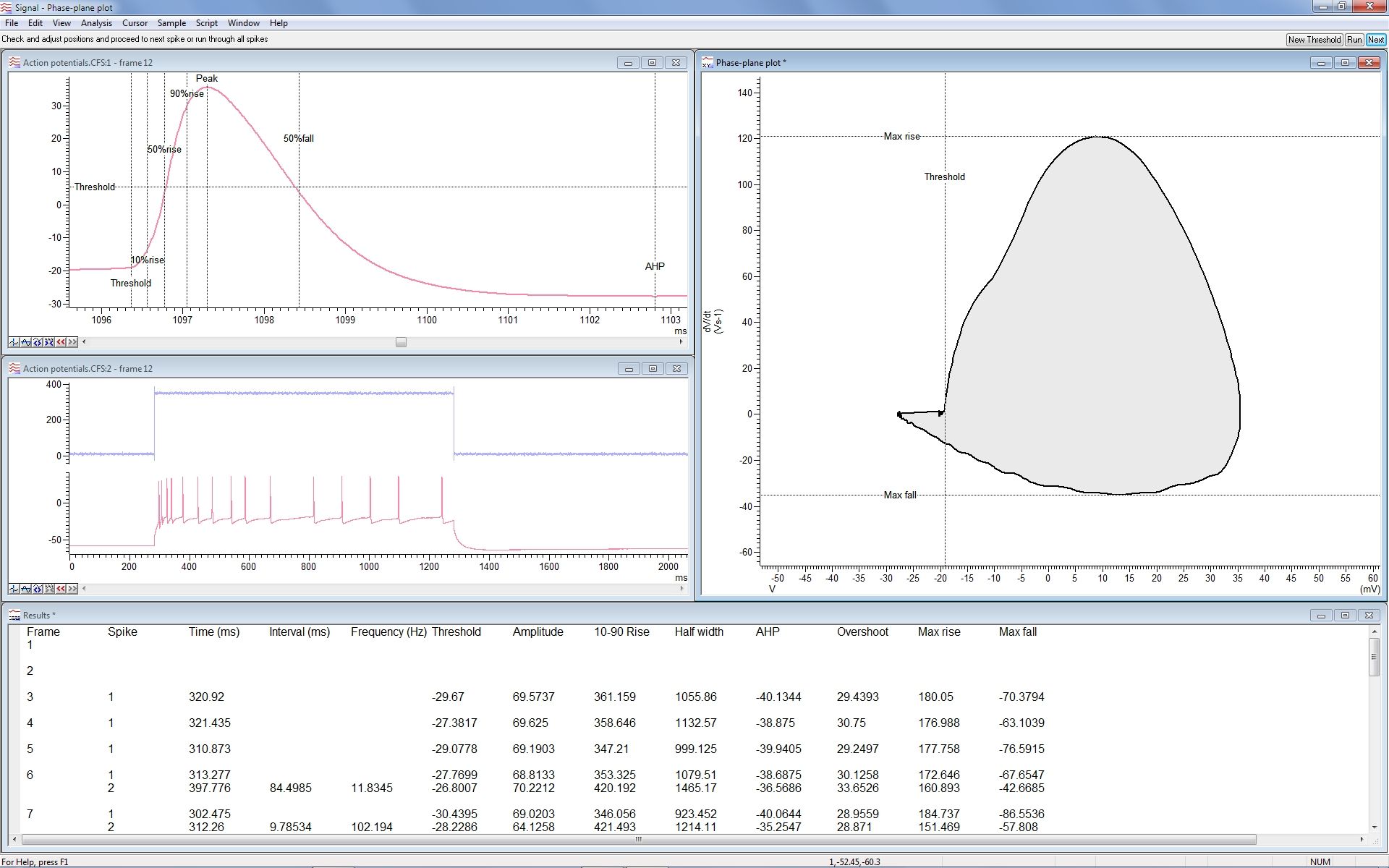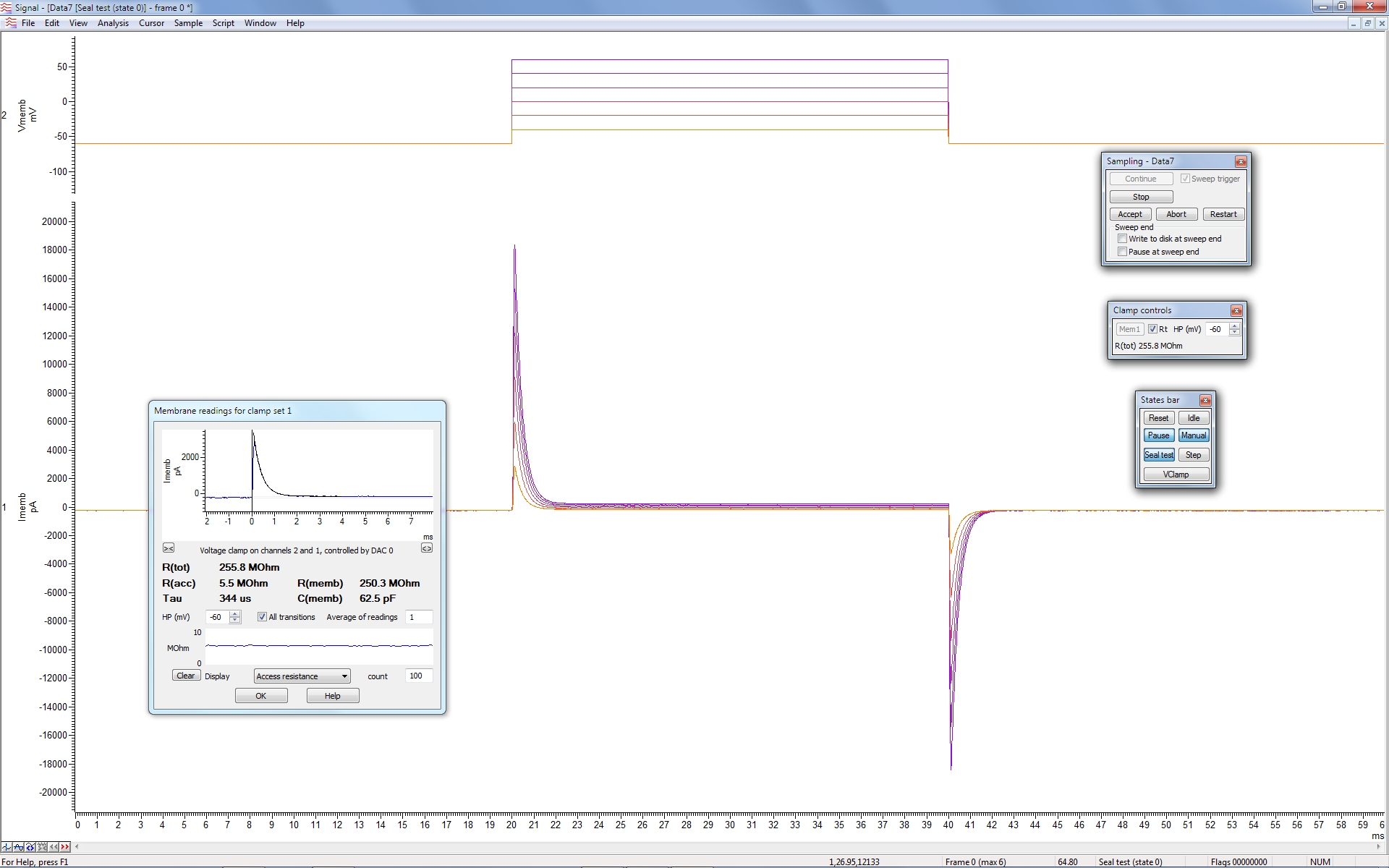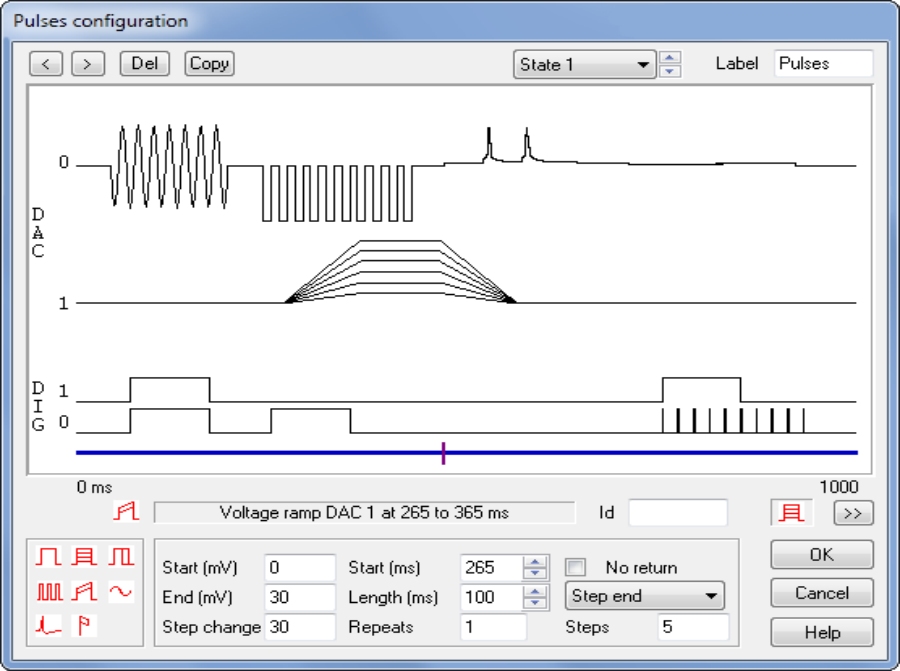CED Signal Software for Windows
Signal is a sweep-based data acquisition and analysis package. Its uses range from a simple storage oscilloscope to complex applications requiring stimulus generation, data capture, control of external equipment and custom analysis. This flexibility makes it ideal for a wide range of applications including transient capture, patch and voltage clamp, LTP studies and evoked response.
The powerful data capture and time-saving analysis functions of Signal together with one of the CED 1401 family of laboratory interfaces make an extremely flexible and cost effective addition to any laboratory.
Typical Applications
- Evoked response and TMS
- Output fixed, random and pseudo-random sets of pulses with on-line and off-line waveform averages and measurements of latencies, amplitudes and areas.
- LTP and LTD studies
- Generate single, paired and trains of pulses on multiple outputs. Automatically measure features including baselines, amplitudes, latencies, areas, durations, percentage rise and decay times, and population spike parameters for single or multiple responses per frame.
- Whole cell voltage and current clamp
- Interactively control holding potentials and pulse outputs using a graphical pulse editor. Construct I/V plots, leak subtraction and curve fits on-line and off-line.
- Dynamic clamp
- High speed, fully integrated functions to simulate ion channels and leaks and use simulated synapses to generate hybrid networks.
- Single channel patch clamp
- Detect single and multi-level channel openings on-line and off-line automatically. Produce measurements such as open/closed times and amplitudes and display result histograms.
- EMG
- Record single and multiple channels of EMG. Perform rectification and smoothing at the touch of a button or under script control. Produce power spectra that update as new data sweeps are captured.
- Auditory evoked potentials
- Generate complex stimulus protocols and reports under script control. Features include: automatic artefact rejection, digital filtering, generation of sub and grand averages and feature detection using active cursors.
Data Acquisition
General Features
- Record sweeps of waveform and marker data, free-running or time-locked to a stimulus or response
- Perform analysis on- and off-line including waveform averaging, power spectra and histograms
- Detect and measure waveform features in raw data and average result views
- Mark detected features and events interactively, by automated measurement processes or by a script
- Generate simple and complex protocols of waveform and digital output
- Design stimulus outputs graphically
- Easily manipulate data using menu or keyboard driven functions.
- Automate and customise analyses and repetitive tasks
- Digitally filter (FIR and IIR) via interactive dialogs or scripts
- Configure multiple views of the same data file and overlay data from multiple sweeps and channels
- Import and data files; Formats include Axon, EDF, HEKA, ASCII and binary, text, and MATLAB®.
Patch Clamp Electrophysiology Specific Features
- Optional 'clamping' functions specific for whole cell or single channel recordings.
- Membrane analysis option displays measurements of total resistance, access and membrane conductance, capacitive transient decay time constant and membrane capacitance
- On or off-line subtraction of scaled leak trace, including capacitive transients
- Generate single channel idealized traces
- Edit idealized traces by dragging durations and amplitudes.
- Produce amplitude, dwell time and burst duration histograms from idealized traces
- Simulate ion channels, leaks and synapses with built-in high speed dynamic clamping support.
- Directly compatible with the A-M Systems Model 2400 Patch Clamp amplifier as well as amplifiers from other major manufacturers.
Processing & Analysis
Acquisition Using a CED 1401
- Record and display fast sweeps of waveform data to disk with over 15 million data points per sweep with a Power1401
- Output pulse, sine, ramp and stored waveforms while sampling
- Set up multiple output states, each providing differing pulse outputs or stimuli. Sequence the order and repeats of each state cyclically, randomly, semi-randomly, manually or to a predefined protocol. Frames are marked with the state used
- Generate accurate timing markers indicating when stimuli were triggered
- Generate sets of varying stimuli on up to 8 waveform and 16 digital outputs
- Sample multiple waveform inputs at aggregate rates up to 1 MHz
- Easily switch sampling configurations or output protocols
- Capture free-running or triggered sweeps with post or peri-trigger modes
- Trigger data capture from external pulse, waveform threshold crossing or internal clock
- Gap free option for acquisition of continuous data
- Sample variable numbers of points in different sweeps
- Perform built-in and custom analyses on incoming sampled data
- Sample at arbitrary or varying rates with external convert input option
- Simultaneously review earlier frames together with incoming data using duplicate windows
- Automatically reject or tag frames containing high amplitude artefacts
- Automatically adjust channel scaling in response to gain changes detected from either patch clamp amplifier telegraphs or supported software controlled amplifiers
Complex Stimuli and Experimental Control
Signal incorporates a powerful sequencer function for generating digital and analogue outputs for stimulus control. Sequences are run within the 1401 interface to ensure highly accurate timing independent of the host PC operating system. There are two methods available for specifying outputs.
The graphical pulse editor covers the majority of stimulus requirements in an easy to use drag and drop environment where you build up to 256 sets of up to 500 pulses linked to the multiple states system. Outputs are fixed or they can change amplitude and duration on repeats. You can also modify the outputs while sampling continues.
If your requirements cannot be entirely met with the pulse editor you can define your outputs as a text sequence of instructions. This makes it possible to control the sequence interactively or by using the script language running on the host PC to pass variables and tables of values to the 1401. It also enables you to produce pulse protocols either time-locked to the recording frames or free running. Further experiment control options including communication through serial lines are also available using the script language.
Output pulse editor
Patch Clamp Electrophysiology
Signal for Windows incorporates many powerful features for whole cell and single channel experiments that make it ideal for electrophysiological recording. Familiar terms, and easily set up protocols for standard requirements enable the user to get started quickly using Signal and a CED Power 1401 data acquisition interface. Signal also incorporates an import function allowing you to analyze data from other recording systems.
Signal can easily all of the stimuli needed, including pre-recorded waveforms to perform voltage and current clamp experiments. In addition, Signal combined with the Power1401-3 data acquisition system are the easiest way to implement Dynamic Clamping in your research protocols.
Multiple sets of stimuli can be stored in one sampling configuration and selected manually or automatically sequenced. Signal can perform on-line measurement of seal and membrane resistance. Leak subtraction and I/V plots can be generated in real time or during offline analysis. Signal also provides mathematical functions to enable complicated curve fitting to waveform data and I/V plots.
Telegraph communication from the A-M Systems Model 2400 Patch Clamp Amplifier allows Signal to set properly scale collected data and send appropriate control voltages to the amplifier for complete control of the recording preparation
Signal can perform complicated curve fitting to your collected measured data, including Exponential, Gaussian, Polynomials, and Sigmoid curve. All data can be plotted and exported in tabular or graphical forms.
Dynamic Clamping
Signal and the Power1401-3 data acquisition system are the easiest way to implement Dynamic Clamping in your research program. Signal includes a fully integrated, easily configurable, high-performance dynamic clamping system. This advanced feature makes the technique readily available to researchers who do not have access to complex customized hardware and software, by providing a professionally designed, maintained and supported package that is usable by all, at a low cost.
In the dynamic clamp technique, a typically nonlinear feedback system delivers current to a cell to represent the actions of virtual ion channels, allowing ion channels or synapses to be simulated or the actions of existing channels to be cancelled.
When used in conjunction with the Power1401-3, Signal can be the bases of your dynamic clamp environment. Standard embedded hardware-based dynamic clamp systems offer feedback that is fast and precisely timed, but these systems are often expensive and sometimes inflexible. PC-based systems, on the other hand, allow more complex feedback, but real-time performance can be poor. The CED Signal dynamic clamp system gives you the best of both worlds. All real-time aspects of the system are executed by the Power1401’s fast embedded processor using pre-calculated lookup tables and optimized floating-point arithmetic, with the feedback calculations triggered by the ADC sampling for maximum stability. This software-based design is quick yet still provides great flexibility. The non-real-time aspects of the system are handled by the controlling PC to allow simplicity and ease of use.
The result: a dynamic clamp system integrated into the standard Signal data acquisition software that outperforms generally available dynamic clamp systems, at a reasonable cost.
System Requirements
Signal Dynamic clamping requires a CED Power1401-3 and a PC with Windows NT 2000, Windows XP, Windows Vista, Windows 7, Windows 8 or Intel Macintosh running Windows. Both 64-bit and 32-bit OS versions are supported. We recommend the computer has a minimum of 2GB of RAM.
Control Your Experimental Protocol With Automated Stimulus Generation
- Generate stimuli on up to 8 DACs and 8 TTL lines.
- Define as many as 256 sets of up to 500 pulses.
- Set stimuli at a fixed level or relative to an adjustable holding potential or current.
- Output multiple sets of arbitrary waveforms per sweep.
- Sequence through sets of pulses manually, cyclically, randomly or by user-defined protocol.
- Interactively edit, add and remove stimuli while recording.
- Define pulses with fixed or stepping amplitudes and durations.
- Pulse types include square waves, ramp, sinusoid, pulse trains and pre-recorded or user-generated waveforms, for example, recorded action potentials.
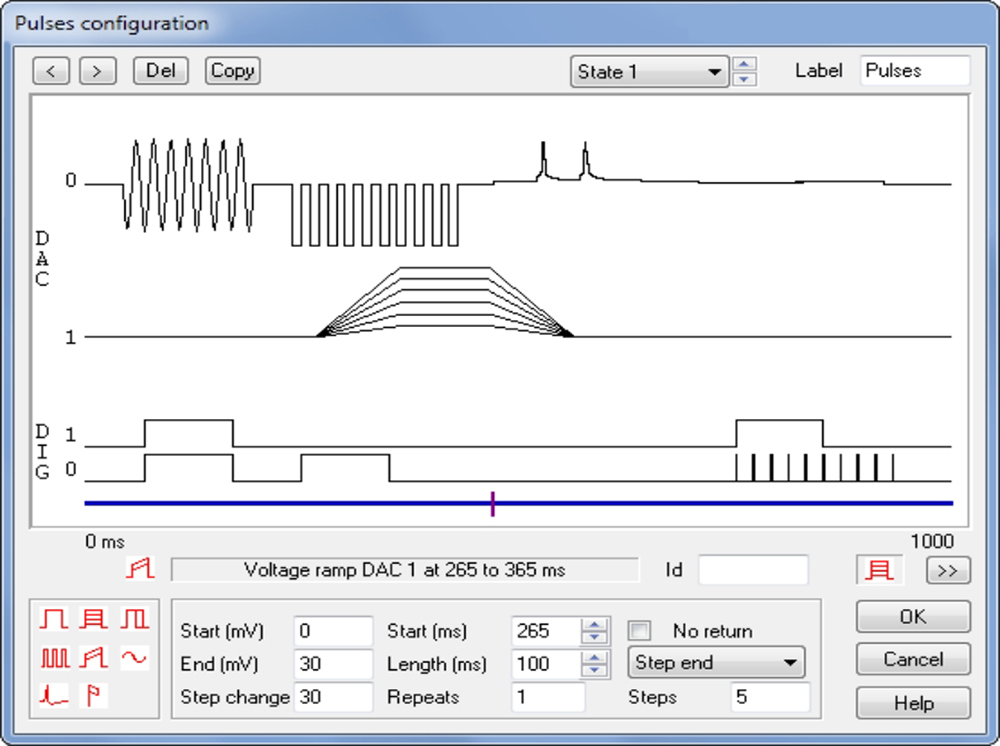
Clamp Specific Sampling Support
- Nominate a particular recording state to be used for seal and membrane resistance measurements.
- Easy adjustment of holding potentials.
- Dynamic readout of seal resistance.
- Membrane analysis option displays measurements of total resistance, access and membrane conductance, capacitive transient decay time constant and membrane capacitance.

| Catalog # | Name | Price | |
|---|---|---|---|
|
953040
|
Single License |
Price:
$3,465.00
|
|
|
953060
|
Additional License |
Price:
$1,155.00
|

